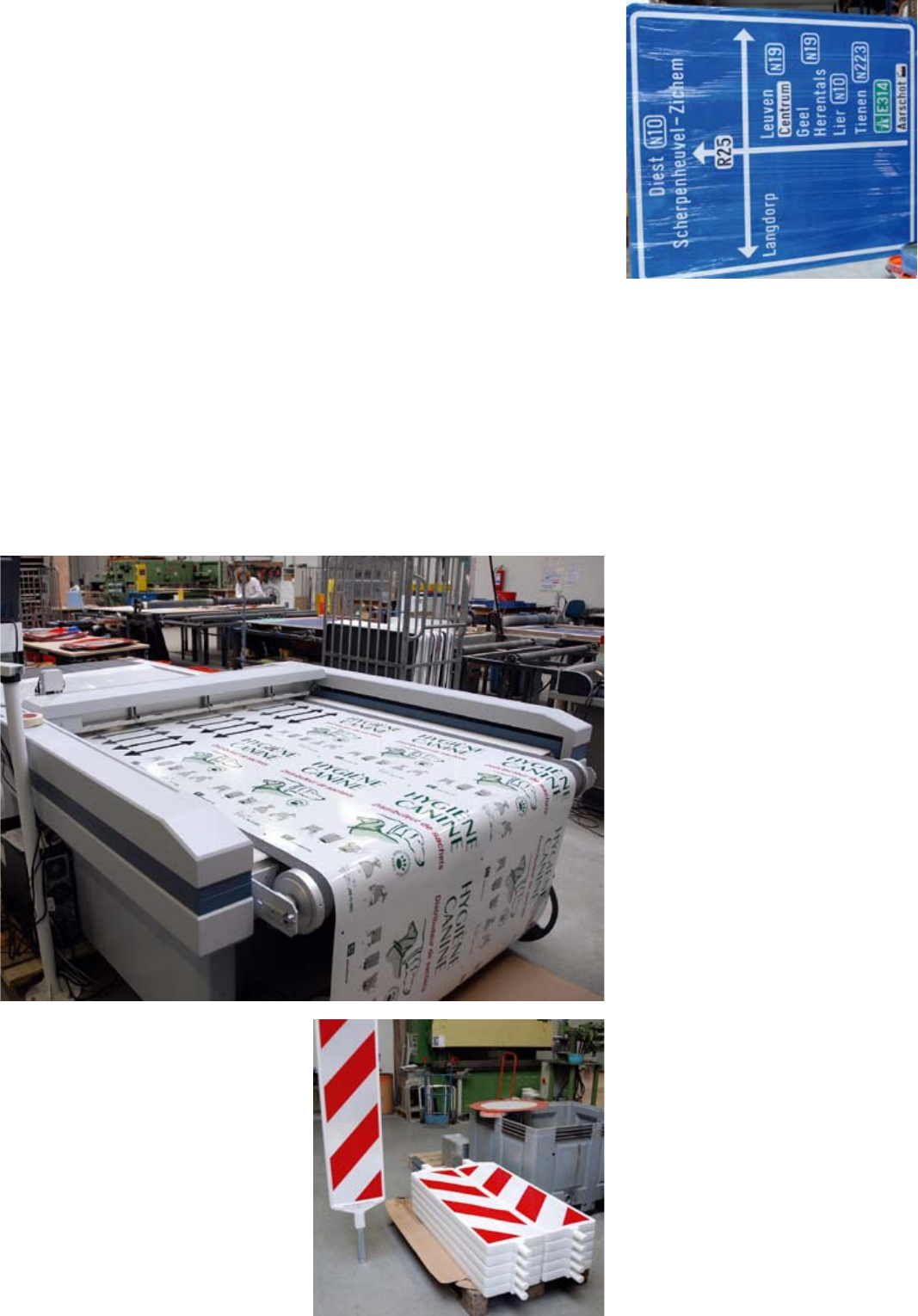
With advice from 3M, Janssens installed a
Rho 161 TS UV roll to roll printer last
September, which uses special media and
inks supplied by 3M. Mr Ivan De Coster,
Production and Quality Control Manager
of Janssens, said: “We have always used
3M consumables and wanted a machine
that was both suitable to our business
requirements and compatible with 3M inks
and materials. Durst and 3M worked closely
in the development of the machine and
although we are acting as a Beta site for the
new version of the Rho 161 TS, it has proven
to be very reliable. We are also very pleased
with its performance, the print quality is
excellent and its productivity is very high.”
Four weeks after the installation of the Rho
161 TS, Janssens also invested in a digital
cutting table. Prior to that the signs were
either stamped out or cut out by hand.
Mr De Coster commented, “We are printing
5 or 6 complete rolls of material a day
on the Rho and we needed to be able to
cut out the printed signs equally quickly.
From printing all our signs by the silk
screen process up to four years ago, we
now produce 75% digitally, it’s far more
convenient and turn around is much faster.
We started with short run or one-offs
being printed digitally, but now we print
anything up to 500 signs on the Rho, cost
effectively. Anything over that and it is
still more economical to use silk screen
particularly for the printing of single colour
signs.”
Janssens is responsible for the complete
process of traffic sign production, from
the delivery of plain sheets of aluminium
through to the finished sign. The raw sheets
of aluminium are cut and fabricated into the
correct shape of the sign, weather proofed
and powder coated ready for the finished
printed sign to be glued in place.
Belgium company uses
Durst Rho 161 TS for traffic
sign production
Janssens, based at Lokeren, near Ghent in
Belgium, has built its business on the
production of traffic signs since it was
founded in 1978. Initially production was
limited to a few standard signs printed by
the silk screen process. Today the company
is responsible for several hundred different
designs, many of which are in multiple
colours and it has also diversified into
different areas of road and traffic
management. Group Janssens, which
employs more than 160 people (32
manufacturing trafc signs), encompasses:
the installation of traffic signs, sign rental,
the production of traffic lights, illuminated
“speed warning” signs powered by solar
energy, road markings and a division that is
responsible for the renovation and upkeep
of bridges, buildings and car parks.
Janssens first decided to introduce digital
printing technology into the traffic sign
business four years ago when it invested in
a solvent printer. Digital print provided far
greater flexibility especially for low volume
work. However, there are environment issues
with solvent ink and the company believed
UV ink was the next step in developing a
better printing solution.






